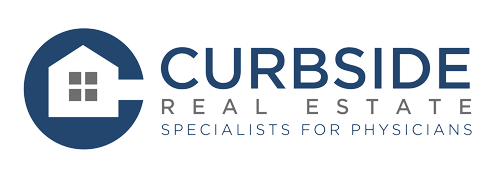The Doctor Loan: A Specialized Mortgage With Perks

A physician home mortgage, also known as a doctor loan, is a specialized mortgage program that was created exclusively for medical students, established physicians and dentists. This specific loan is easily obtainable by individuals within the medical field, mainly because it is a trusted profession. This profession typically has the reputation of employing individuals who earn a substantial income and enjoy job security.
There are many differences between a physician mortgage loan and the more conventional loan. But even though a doctor loan is not a traditional loan, a few mandatory requirements still need to be fulfilled. For example, a credit score of at least 720 is imperative. Also, many banks require at least a 10-20 percent down payment on the mortgage. Some banks are lenient on this because they think about the long-term scope of the loan. Therefore, in certain cases, the down payment will be slightly lower than that of a traditional mortgage.
Within this article, you’ll learn the essential requirements of securing your physician mortgage loan. Let us break down the pros and cons:
Pros
What it comes down to with regards to securing a doctor loan is the underwriting guidelines; most physician loans do not include mortgage insurance. So, with a physician’s mortgage loan, you can typically expect to see more liberal underwriting guidelines.
Banks will allow physicians to qualify without factoring student loan debt into the equation. They will usually allow doctors to qualify for a higher loan-to-value ratio because of the expected income potential. They will even allow physicians to close prior to beginning their residency, sometimes as early as 60 days before employment begins. This makes it easier to occupy the new home right after graduation.
Because some banks allow students as well as physicians to put down less than the traditional 20 percent down payment, this particular bank loan is more attractive to applicants. Here are some of the benefits of putting less than 20 percent down with a doctor loan:
- One thing to remember is that mortgage interests are tax deductible. For example, say you have a 4 percent mortgage rate. After the tax deductions of state and federal income taxes, the effective cost of that loan could recede to 3 or perhaps even 2.5 percent. Keep in mind, though, that the factors differ depending on where you’re located.
- If you do obtain a low rate like 4 percent, 10 percent down could be allocated toward assets that present a larger yield, such as ETF accounts or stocks that offer a monthly or quarterly dividend. If these asset classes present a greater yield than the effective rate on your mortgage, they may be ideal.
- There is no mortgage insurance required with that little of a down payment. So if you are seeking a physician mortgage loan on a property worth $1,125,000, the 10 percent down loan requirement allows for the mortgage note on that property to be $6,039.24 (@ 5 % interest, APR 6.561 %).
- Residents and fellows can be approved for a doctor loan with 100 percent financing available.
Cons
The perks of a doctor loan not withstanding, there are some drawbacks of this specialty loan as well. Before physicians even attempt to acquire a physician’s mortgage loan, they should make sure that their affairs are in order.
Here are some of the factors to weigh:
- If you have a substantial amount of student loan debt, it’s best to get on some type of payment plan. Underwriters require payment history on all debt that resides on your credit history.
- A minimum credit score of roughly 720 is a must for obtaining financing. If you’re just starting out, it can be challenging to achieve a solid credit score. One effective tactic for building credit is to apply for secured credit cards. These types of cards require low investment and, if maintained properly, can increase your score exponentially.
- Still trying to close on employment contracts can be a hurdle as well. It is best to have the employment contract in hand. Keep in mind, though, that you can still occupy your new home within 60 days if you at least have employment that provides an hourly rate or salary.
- A substantial reserve is also needed for loan approval. Generally, banks require you to have three to six months of the principle (mortgage payment) in savings as you begin your career. Retirement accounts are an equal consideration too.
- Needless to say, the biggest deterrent is not at least have the 10 percent down payment saved.
These factors are concerning to banks that offer this specialty loan, for they pose potential risks to the lender.
This article was purposefully done to enlighten prospects regarding the attainment of a physician mortgage loan. With this download of information, choosing either option will be made from a wider perspective. Your decision should be based from your particular needs. With any decision you choose, we wish you the best in your field.
